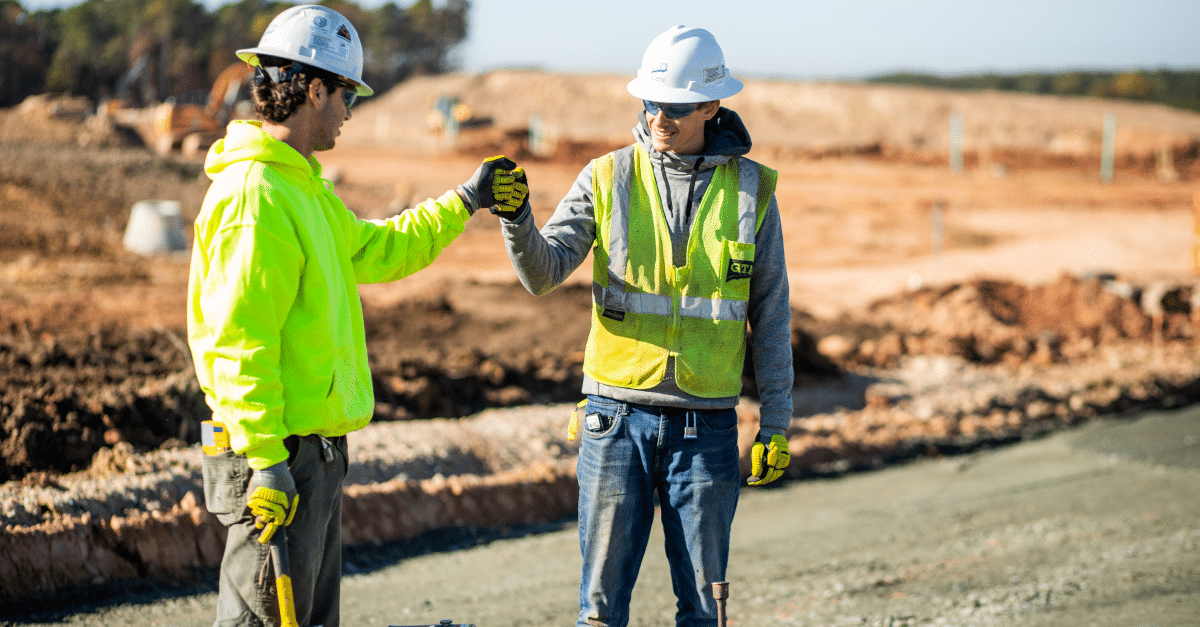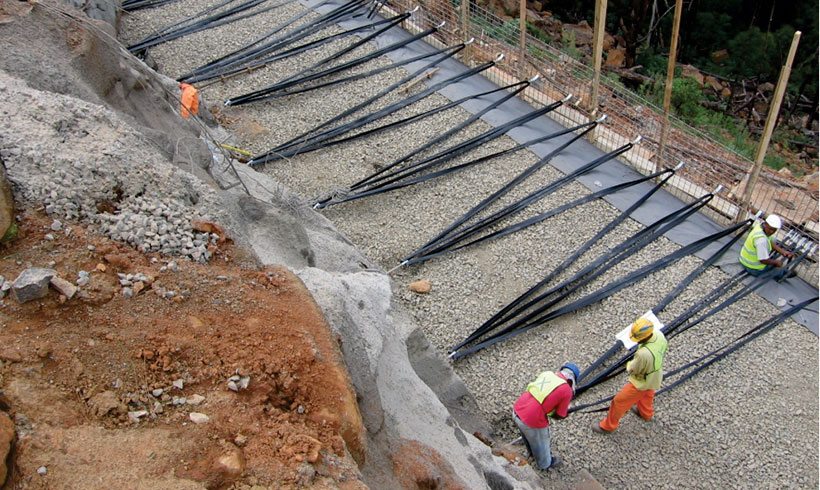Some Of Geotechnical Engineering For Construction Projects
Geotechnical Engineering For Construction Projects - An Overview
Table of ContentsThe Single Strategy To Use For Geotechnical Engineering For Construction ProjectsThe Ultimate Guide To Geotechnical Engineering For Construction ProjectsGetting The Geotechnical Engineering For Construction Projects To WorkGet This Report about Geotechnical Engineering For Construction ProjectsThe Best Guide To Geotechnical Engineering For Construction Projects
As a result, during the investigation, it is vital to pierce at the needed depth and the required variety of holes according to the suggestion of the Canadian Foundation Layout criterion. Occasionally, the proprietor might save some Geotechnical Examination price but end up investing greater than the prepared for during the building expense.The obligations of the geotechnical consultant involve offering product screening for building support. Geotechnical Engineering for Construction Projects. Geotechnical engineers analyse all the field test reports to make certain that building and construction is taking place based on the job requirements. Throughout building, a confirmatory test for soil compaction is done on-site to ensure that no future negotiation takes place
After the concrete is poured -7 days and 28 days- tests are carried out on concrete examples gathered from the website to ensure that the concrete poured fulfills the layout standard. Asphalt core is taken after the Asphalt is laid and compacted to verify that it meets the style requirement. All research laboratory examination records are analysed by the Geotechnical Designer to guarantee that it satisfies the task specification.
Getting The Geotechnical Engineering For Construction Projects To Work

Geotechnical design plays a vital role in guaranteeing the security of building and construction jobs. Discover exactly how it impacts layout and general project success. Geotechnical engineering is a crucial branch of civil design that concentrates on comprehending the behaviour of planet materials, such as soil and rock. It entails analysing subsurface conditions to make certain that a structure's foundation or facilities is steady and secure.

For a reputable foundation and a smooth construction procedure, depend offer the competence you require. Get in touch with to get professional advice and geotechnical services customized to your following job.
Getting My Geotechnical Engineering For Construction Projects To Work
When embarking on a land development project, recognizing the ground beneath your feet is as critical as the structures you intend to develop above it. Our Geotechnical Design group analyse the ground, ensuring it is appropriate for the suggested advancement while giving you with the information called for to satisfy your job goals.
Geotechnical Design checks out the formation of the ground, as it is the foundation for all tasks. Where frameworks need to be developed relative to the ground conditions; ground conditions (e.g., soft ground) might require reinforcing depending on the dimension of the desired framework. Prior to structure, you require to understand about the groundwater, soil structure, and liquefaction chance of your land.
For websites that are not attached on the neighborhood authority framework extra site examinations would certainly be needed to supply technical inputs for on-site stormwater and wastewater. We have actually experienced Geotechnical Designers based in each office, sustaining your geotechnical requirements across the country. Reach out to us to talk about just how we can support your following task.
These records are tailored to fulfill the specific demands of a task and include design specifications and advice for the building of a variety of synthetic frameworks. As giving consultancy solutions covering locations such as incline stability and load-bearing capabilities for different products, these designers take on study and advancement activities to improve techniques, equipment, products understanding and analysis covering entire lifecycles.
How Geotechnical Engineering For Construction Projects can Save You Time, Stress, and Money.

Nonetheless, prices of pay generally increase as your understanding and skills expand, with guidelines indicating a graduate starting wage of in between 18,000 and 28,000 each year in the UK. This increases to 26,000 to 36,000 with a few years of experience and after that getting to 40,000 to 60,000+ for elderly, legal or master engineers.
Nonetheless, with the best application it is feasible to grasp the occupation and gain access to a tough yet satisfying and important job. A rock hound would certainly need to re-train to end up being a great site geotechnical designer, although there is lots of cross-over in between both professions, which can make this easier - Geotechnical Engineering for Construction Projects. Rock hounds require to have an understanding of soils, rocks and other materials from a clinical perspective, while geotechnical engineers tale their knowledge of matters such as dirt and rock mechanic, geophysics and hydrology and use them to design and ecological tasks
When starting, these engineers will certainly often tend to service less complex jobs, accumulating understanding and experience all set for even more challenging job later on. Geotechnical engineers have a tendency to be experts in specific areas as they expand in experience, concentrating on specific infrastructures such as trains, roads or water. These engineers likewise collaborate with eco-friendly power, offshore and onshore oil and gas, nuclear power, and a lot more.
The Only Guide to Geotechnical Engineering For Construction Projects
The time taken to become a geotechnical designer depends on where you are based, where you research study and what degree of education you want to acquire prior to getting in the office. Generally-speaking it takes 3-4 years to get to the standard needs to start a profession as a geotechnical designer.
These procedures allow professionals to analyze a host of soil mechanics including weight, porosity, void-to-solid particle proportion, leaks in the structure, compressibility, optimum shear stamina, bearing capability and contortions. If the framework calls for a deep structure, designers will make use of a cone infiltration test to approximate the quantity of skin and end bearing resistance in the subsurface.
When analyzing a slope's balance of shear stress and anxiety and shear toughness, or its capacity to look at these guys stand up to and undergo motion, rotational slides and translational slides are typically thought about. Rotational slides fail along a bent surface, with translational slides occurring on a planar surface area. A specialist's objective is to establish the problems at which an incline failure could take place.
Typically, findings suggest that a site's soil must be treated to improve its shear strength, stiffness and permeability prior to design and building. When it comes time to set out structure plans, professionals are significantly concentrated on sustainability, more specifically just how to minimize a foundation's carbon footprint. One technique has actually been to replace 20 percent of a foundation's cement with fly ash, a waste product from coal fire power plants.